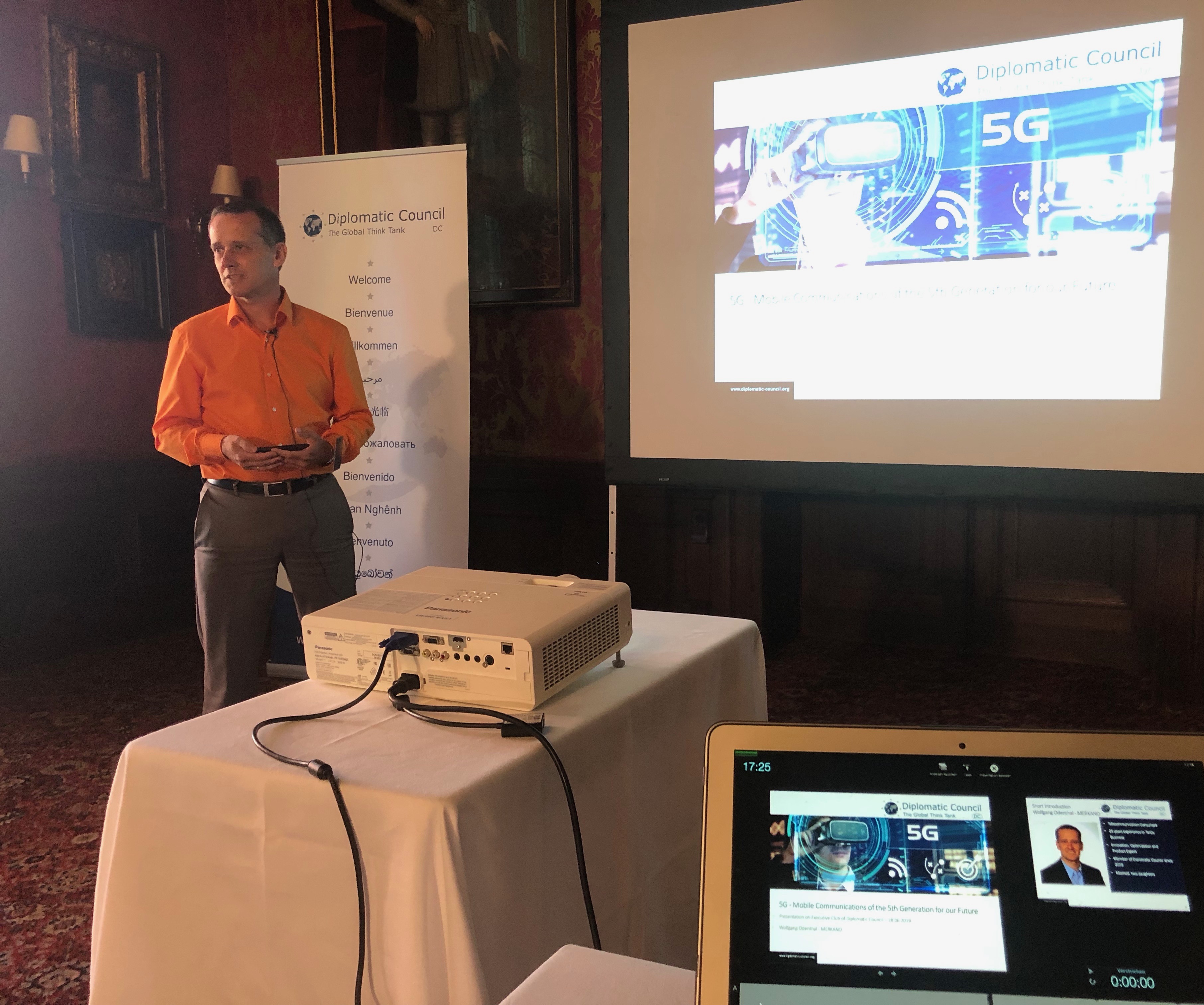Thought Leadership

5G is the future of mobile communication. Diplomatic Council member Wolfgang Odenthal gives insight facts about what it is and what it means.
What is 5G Services
5G means differentiation on delay, links and throughput. Some services need low latency, e.g. autonomous driving and sensors. Some services need high bandwidths (e.g. 8k Video). Some Services need a high number of links with low bandwidth (IoT, sensors). Some need a combination of all.
With 5G all requirements can be fulfilled in one Infrastructure.
The 5G five capabilities are
- super fast broadband (1-10 Gbps),
- efficient energy usage,
- handling of mass connection,
- high reliability and availability,
- ultra-low latency (about 1 ms).
A range of applications
5G-enabled applications include extreme mobile broadband and fixed wireless access (consumer and business broadband of the future for 4K, 8K, video, gaming etc.), massive machine-type communication (smart grids, connected home, smart factory etc.) and critical real-time communications (e.g. autonomous cars, real-time control). Very useful for the factories of the future, automotive, energy, media and entertainment and quite new applications like e-Health. 5G can provide the required Infrastructure for new opportunities
e-Health on the horizon
e-Health is a good example how to use 5G, actually e-Health is one of the most important use cases for 5G and customers. It allows nearby realtime measuring of health parameters via air. Emergency services can send first data to hospital during delivery of the patient to the hospital. A lot of new medical treatment can be developed based on realtime data transmission. Patients can get more mobility with new possibilities
Industrial Internet of Things (IIoT)
IoT is one of the most relevant use case with highest impact on development of new product lines, more flexible production and shorter changeover time – huge commercial and operational benefits for industry.
Autonomous driving
A very frequently announced use case for 5G is autonomous driving. This requires very low latency and enormous invest in infrastructure
5G coverage
If 5G is required for autonomous driving or modern agriculture (sensors on the ground to optimize use of fertilizer, autonomous drivinig of farm machineries asf.), there needs to be a very high coverage – nearby 100% of land. This is very expensive, related to small cells and many antennas to be installed for high coverage. Citizen initiatives an bureaucracy might slow down the roll-out enormously.
A victim of the US vs. China trade war
5G is set to have a profound effect on countries' economic performance and GDP. Therefore it is an essential part for US-President Trump to reduce influence of Huawei / China in 5G World – actually Huawei is 5G market leader. Data Security is a very essential aspect, but not only with China, also with USA, South Korea asf. Trade war and ban of Huawei will have a huge impact on 5G-rollout
5G -Microwaves & Milimeter Waves – Is it dangerous?
A clear „No, but …“. First of all: 5G does not use rays. Actually used frequencies in countries like Germany are standard frequencies already in use for 3G, 4G and WiFi. In the future with 20 GHz and higher frequencies there is only few research material available. It needs much more research about the impact on those milimeterwaves.
Conclusion
5G has a very high potential to make life and business more easy.
Very high potential for optimization of logistics, production lines, distribution, health care.
Politicians need to create conditions to enable network operators to build the infrastructure fast. It is essential to be an early adopter to gather experience in possibilities of 5G-related use cases.
Many new options with 5G, operators and industry need to come into deep exchange about requirements and potentials for both sides.
There is a long way to go – but there is no question 5G will arrive.
